#ZX Microdrive
Explore tagged Tumblr posts
Photo

12 notes
·
View notes
Text
Tag 5: Kloning des Sinclair ZX Spectrum
Der Sinclair ZX Spectrum ist überall in der Welt geklont worden. Dies ist ein Zeichen für die starke Nachfrage aufgrund seiner Fähigkeiten und seines günstigen Preises. Selten war Sir Clive Sinclair begeistert, sein Produkt kopiert zu sehen.
Der fünfte Beitrag in meiner Reihe von Beiträgen zur Neugestaltung der Ausstellung in meinem Computermuseum. Heute und an weiteren 28 Tagen stelle ich die Zusammenstellung meiner Ausstellungsstücke vor. Heute kommt der zweite Bericht über den Sinclair ZX Spectrum. Diesmal mit der Perspektive auf das weltweite Kloning dieses Computers. Er war so erfolgreich, dass er in vielen Ländern kopiert…

View On WordPress
0 notes
Text

from FB
1 note
·
View note
Text
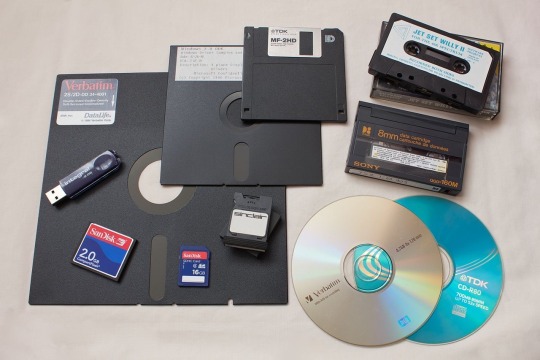
Floppy disk
#wikipedia#technology#tech#techcore#floppy disk#compact disk#dvd#zx microdrive#sdhc card#usb disk#cassette#cassette tape
170 notes
·
View notes
Photo
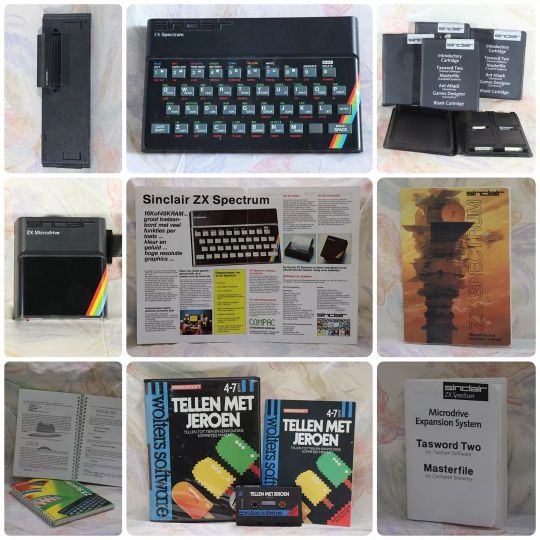
Even though I'm not a #DieHard #ZX fan, I'm very sad Sir Clive #Sinclair has passed away. Rest in peace Sir Sinclair. Thank you for all that you did for the #HomeComputer world. You made a lot of people happy, including me... #Retro #RetroComputing #RetroGaming #RetroGame #C5 #Spectrum #Zx81 #ZxSpectrum #Microdrive https://www.instagram.com/p/CT7Sxjzs_Zu/?utm_medium=tumblr
#diehard#zx#sinclair#homecomputer#retro#retrocomputing#retrogaming#retrogame#c5#spectrum#zx81#zxspectrum#microdrive
0 notes
Photo
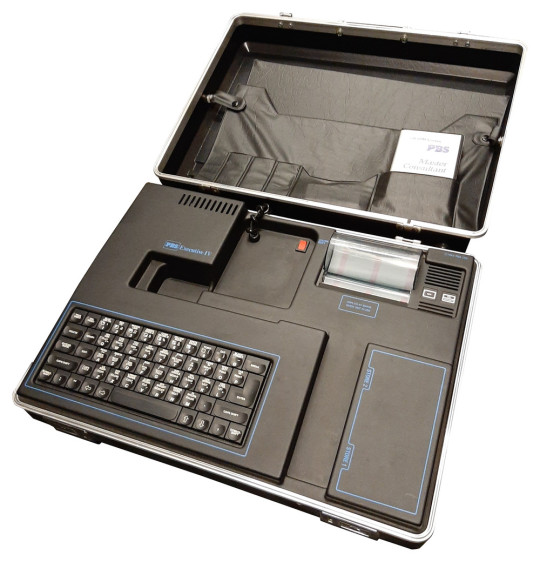
PBS Executive IV
“In 1985 Portable Business Systems Ltd built a Spectrum+ into a briefcase along with a ZX Interface 1, Microdrive, & printer. The PBS Executive IV was developed for reps to present demonstrations in a client's home, via their TV.”
Source: Computing History
56 notes
·
View notes
Photo
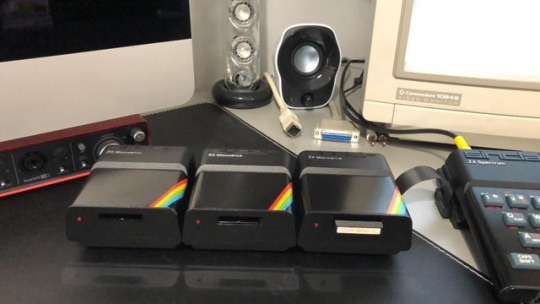
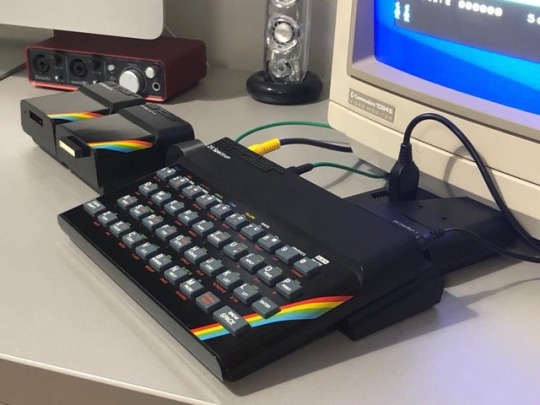
enJoyiNG Zx SPeCtrUM MicRodriVeS...
185 notes
·
View notes
Text
The original rubber key Sinclair ZX Spectrum tricked out with ZX Interface 1 controlling twin ZX Microdrives and ZX Interface 2 running Jet Pac on ROM. The first time I've put all of the bits together! #retro #retrogaming #classic #vintage #computer #sinclair #spectrum #sinclairspectrum #jetpac
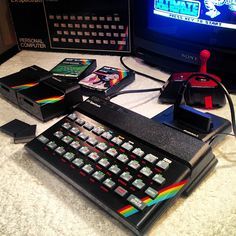
The original rubber key Sinclair ZX Spectrum tricked out with ZX Interface 1 controlling twin ZX Microdrives and ZX Interface 2 running Jet Pac on ROM. The first time I've put all of the bits together! #retro #retrogaming #classic from RetroMachines https://ift.tt/2T5SExY via https://ift.tt/2JtVer8
0 notes
Photo
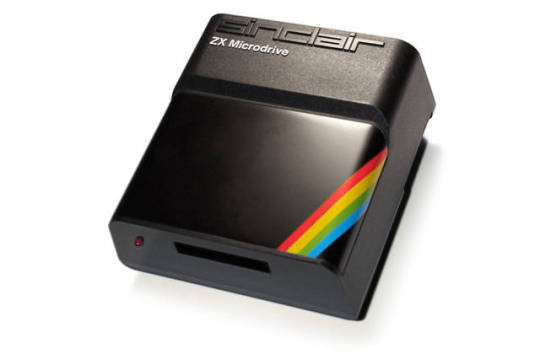
Infinite loop: the Sinclair ZX Microdrive story • The RegisterThe Register640 × 420Search by imageSinclair ZX Microdrive
0 notes
Text
Tech Ability: How the UK forgot six potential titans – BBC News
Image copyright Thinkstock
Image caption Many of the UK’s most promising tech firms ought to have bought by bigger, overseas firms
When it comes to tech, “were not receiving” absence of suggestions or ability in the UK.
But here i am , nonetheless, an ever-growing register of promising corporations that sell out or plainly fail, rather than growing into British titans that could rival the likes of Microsoft, Apple, Google, IBM, Intel, Oracle and Facebook.
Below are some remarkable lessons TAGEND
Sinclair Research
Image caption Sinclair Research sold more than 5 million ZX Spectrums over eight years
There was a time in the 1980 s when video gamers and teenage coders across the UK were more likely to be hunched over one of Sir Clive Sinclair’s computers than an American or Asian-made alternative.
Sinclair Research may have only attained its ZX Spectrums for domestic sale, but it licensed Timex to build clones that were sold elsewhere in Europe, the US and South America. Dozens of unofficial forms were a strike in the Soviet Union too, testifying their entreaty, if not a source of income.
But the firm get unstuck where reference is tried to enter the business grocery. Its Sinclair QL was designed to outshine IBM’s PCs, but its tape-based Microdrive storage was unreliable and the British corporation did not volunteer the various kinds of telephone support the corporate sector required.
Media captionWATCH: Sir Clive Sinclair debates his character in computing’s past and future
“Their computer patterns were reprehensible by our criteria, ” Sir Clive later told the BBC .~ ATAGEND
“But because … IBM had such a potent standing, I don’t think we could have challenged it.”
After the C5 electrical vehicle too failed to catch on, a cash-strapped Sir Clive exchanged his firm’s brand and assets in 1986 to Amstrad, another domestic computer-maker.
Image copyright PA
Image caption Sir Clive sold the rights to his computers to Alan Sugar’s Amstrad
Amstrad later faced troubles with computer storage of its own and eventually swopped focus to TV set-top cartons before exchanging out to BSkyB.
Friends Reunited
Image copyright Friends Reunited
Image caption Friends Reunited led to unions – and divorces
Years before Facebook was founded, let alone open to the public, a couple from Hertfordshire and one of their friends, created a social network that allured millions of users in the UK, Australia, South Africa and beyond.
Friends Reunited connected members with their former classmates by going them to share the names of their old schools and the year they had left.
Over time, the theme was expanded to cover targets of study, athletics units and neighbourhoods where users had lived. Spin-off locates were also created to offer online date, job searches, word timbers and routes for consumers to find their family trees.
When ITV paid 175 m to buy the operation in 2005, it expected to continue its red hot growth.
Image copyright ITV
Image caption By the time ITV induced Acquaintances Reunited free to employ, many of its members had gone abroad
But the broadcaster saw the mistake of continuing to commission useds to contact one another, rather than relying on ad revenue alone, for too long.
That allowed Facebook, MySpace and Bebo to take the lead.
ITV exchanged the business for simply 25 m in 2009. Although it tottered on under other UK owneds until earlier this year, it never retrieved its momentum.
Lastfm.com( 2002 -2 007)
Image copyright Last.fm
Image caption Last.fm offered customers a free course to get a personalised online radio terminal
Last.fm began its life as an internet radio terminal and an affiliated website where customers rostered the trails they liked to meet others with similar tastes.
But it only really took off after it merged with Audioscrobbler, a plug-in that automatically logged lyrics that its customers had listened to on their computer and MP3 player.
This drew it possible to build up a deeper picture of its users’ habits, which in turn facilitated the service stir song recommendations, and then later show nearby concerts and music videos too.
By 2007, the services offered had attracted 15 million consumers. However, rather than stay independent, its founders opted to sell out to the US media group CBS for $280 m( 212 m ).
Image copyright Last.fm
Image caption The Last.fm Scrobbler tool automatically advised the services offered each time the subscribers listened to a song
They holds the view that they had struggled to find a way to be profitable in light of the royalty and copyright costs the music industry was requiring, and said that teaming up with the US broadcaster handed them greater negotiating clout.
However, the service continues to rack up losses.
A subscription-based music streaming app was a bust, and these days Last.fm is a relatively minor player. It still recommends music but relies on YouTube, Spotify and other third-party services to provide it.
Autonomy
Image caption Mike Lynch and HP are still pushing a law duel over the merger of Autonomy
Silicon Valley had an opportunity to Google, but for a age Autonomy was the UK’s most highly regarded investigation giant.
The firm was founded in Cambridge in 1996 and developed software that allowed its your customers to hunt through “unstructured data” – emails, videos, social network poles, phone calls, images and other information are available in apps – that was not kept in neat databases.
The service attested favourite with a wide range of organisations, which used it to carry out law checks, create archives and center their marketing.
In 2011, Autonomy proved its data-analysis proficiencies had further potential when it developed an augmented actuality tool that allowed smartphones to superimpose graphics over real-world views.
Image copyright Autonomy
Image caption Autonomy’s augmented reality app proved videos on an iPhone when it was held in front of a relevant sign
Hollywood director JJ Abrams was among the first to use it within an app that promoted his movie Super 8, and others followed.
The same year, Autonomy’s chief executive, Mike Lynch, agreed to sell the business to HP for only over 7bn. And that’s where occasions get complicated.
Thirteen months after the merger was completed, HP claimed Mr Lynch had misrepresented his company’s financial situation and wrote down most of its value.
The two sides are now suing each other in a case which is able to drag out for years.
Image copyright Getty Images
Image caption HP’s Meg Whitman: Her house and Autonomy are suing one another
In a final construction, HP has agreed to sell Autonomy and some of its other activities to Micro Focus, an English software developer, meaning what is left of the business will soon be controlled again from UK shores.
ARM Holdings
Image copyright Apple
Image caption Apple took a stake in ARM Holdings to fasten a chipping for its Newton
Until very recently, ARM Holdings was the flag-waver for the UK’s tech scene.
The computer chip designer was created in Cambridge in 1990 as a joint project between Acorn Computers and Apple.
The US firm wanted a processor to supremacy its first hand-held machine, the Newton MessagePad, but eventually exchanged its stake after Steve Jobs reverted and ditched the product.
That didn’t result the ties between the two companies though, as ARM’s designs were used in processors that powered firstly the iPod, then the iPhone and iPad.
Most other smartphones are also is dependant on ARM’s chip creations, in addition to being able to a wide potpourrus of other technology including smart TVs, cars, fitness trackers, smartwatches and drones.
Image copyright ARM
Image caption ARM does not build chippings itself but licenses its designings to others
Many beings visualized ARM might remain independent as it suited device-makers not to have the conglomerate owned by one of their competitors.
But in July, Japan’s Softbank agreed to pay 24 bn for it.
ARM’s management suggested the move would help it “move faster in creating new technologies”.
But its co-founder Hermann Hauser has been critical, saying that ARM could have grown “even faster” if it had stayed solo.
Swiftkey
Image copyright Swiftkey
Image caption Swiftkey foresees terms to prevent users having to enter letters independently
The UK is famed for its expertise in artificial intelligence.
But several of the sector’s start-ups – including DeepMind, Magic Pony and VocalIQ – simply became known to the wider public once they had fallen into Silicon Valley hands.
Swiftkey was different because it actually wreaked popular concoctions to sell before being taken over.
The London-based house made a keyboard app for Android and iOS handsets.
The software predicts what its users want to write – including emojis – after they have only enrolled a few keystrokes.
Over time, its suggestions get more precise as it examines their habits, and if allowed to review their social network berths, it gets better still.
Swiftkey scored a publicity coup when its tech was adapted to help Prof Stephen Hawking type twice as fast as he could before.
Image copyright Getty Images
Image caption Prof Hawking expends a form of Swiftkey’s engineering
And in 2014, it decided to accelerate its raise further by making its app free to utilize, only billing consumers if they wanted to change the keyboard’s designing and colour.
The tactic drove. By the end of 2015, Swiftkey had been installed on about 300 million devices.
But it also effected its losses to grow .~ ATAGEND
In February this year, the business was sold for a reported 250 m to a deep-pocketed buyer.
Image copyright PA
Image caption Swiftkeys’s founders, Jon Reynolds and Ben Medlock, are now multimillionaires
“We imagine assembling Microsoft is the right next stagecoach in our journeying, ” its co-founders blogged.
Maybe.
But it also highlights how UK start-ups often find pressured to sell once their early-stage funding starts to run out.
The post Tech Ability: How the UK forgot six potential titans – BBC News appeared first on apsbicepstraining.com.
from WordPress http://ift.tt/2zVlQLu via IFTTT
0 notes
Text
Server and Tape Drive Basics
A tape drive may be a data storage device that reads and writes knowledge on a mag tape. mag tape knowledge storage is often used for offline, depository knowledge storage. Tape media usually features a favorable cost and a protracted depository stability.
A tape drive provides successive access storage tape transport may be a data storage device that reads and writes data on a magnetic tape. magnetic tape data storage is often used for offline, archival data storage. Tape media generally features a favorable cost and a protracted depository stability.
A tape drive provides successive access storage, not like a tough disk drive, that provides direct access storage. A disk drive will move to any position on the disk during a few milliseconds, however a tape drive should physically wind tape between reels to read anybody specific piece of data. As a result, tape drives have terribly slow average seek times to data. However, tape drives will stream data terribly quickly off a tape once the specified position has been reached. as an example, as of 2010 Linear Tape-Open (LTO) supported continuous knowledge transfer rates of up to one hundred forty MB/s, adore fixed disk drives.
Magnetic tape drives were initial used for data storage on mainframe computers within the 1950s, with capacities but one MB. As technology advanced, capacities multiplied to ten terabytes or higher of uncompressed data per cartridge as of 2014. In early computer systems, magnetic tape may well be the most storage medium; though the drives were costly, the tapes were cheap. Some computer systems ran the OS on tape drives like the DECtape drive; DECtape had fixed-size indexed blocks that would be rewritten while not disturbing different blocks, therefore DECtape can be used sort of a slow disk drive.
As some data is compressed to a smaller size than the files on hard disk, it’s become commonplace once marketing tape drives to state the capability with the idea of a 2:1 compression ratio; so a tape with a capability of 80 GB would be sold as “80/160”. actuality storage capability is additionally referred to as the native capability or the raw capability. IBM and Sony have conjointly used higher compression ratios in their promoting materials. The compression ratio really realizable depends on the data being compressed. Some data has very little redundancy; massive video files, as an example, already use compression technology and can’t be compressed additional. A distributed info, on the opposite hand, might enable compression ratios higher than 10:1.
Tape drives is connected to a laptop with SCSI (most common), Fibre Channel, SATA, USB, FireWire, FICON, or other[1] interfaces. Tape drives are used with autoloaders and tape libraries that mechanically load, unload, and store multiple tapes, increasing the amount of knowledge which might be keep while not manual intervention.
In the early days of home computing, floppy and hard disk drives were very costly. several computers had associate interface to store data via an audio magnetic recorder, generally on Compact Cassettes. straightforward dedicated tape drives, like the skilled DECtape and also the home ZX Microdrive and Rotronics Wafadrive, were additionally designed for cheap data storage. However, the drop in disk drive costs created such alternatives obsolete.
True data tape drives used additional advanced techniques like multilevel forward error correction, shingling, and linear curved layout for writing data to tape,age, not like a tough Winchester drive, that provides direct access storage. A Winchester drive will move to any position on the disk during a few milliseconds, however a tape drive should physically wind tape between reels to browse anybody specific piece of knowledge. As a result, tape drives have terribly slow average get times to knowledge. However, tape drives will stream knowledge terribly quickly off a tape once the specified position has been reached. as an example, as of 2010 Linear Tape-Open (LTO) supported continuous knowledge transfer rates of up to one hundred forty MB/s, adore fixed disk drives.
Magnetic tape drives were initial used for knowledge storage on mainframe computers within the Nineteen Fifties, with capacities but one MB. As technology advanced, capacities multiplied to ten terabytes or higher of uncompressed knowledge per cartridge as of 2014. In early laptop systems, mag tape may well be the most storage medium; though the drives were costly, the tapes were cheap. Some laptop systems ran the OS on tape drives like the DECtape drive; DECtape had fixed-size indexed blocks that would be rewritten while not distressful different blocks, therefore DECtape can be used sort of a slow Winchester drive.
As some knowledge is compressed to a smaller size than the files on fixed disk, it’s become commonplace once promoting tape drives to state the capability with the idea of a 2:1 compression ratio; so a tape with a capability of eighty GB would be oversubscribed as “80/160”. actuality storage capability is additionally referred to as the native capability or the raw capability. IBM and Sony have conjointly used higher compression ratios in their promoting materials. The compression quantitative relation really realizable depends on the information being compressed. Some knowledge has very little redundancy; giant video files, as an example, already use compression technology and can’t be compressed additional. A distributed info, on the opposite hand, might enable compression ratios higher than 10:1.
Tape drives is connected to a laptop with SCSI (most common), Fibre Channel, SATA, USB, FireWire, FICON, or other interfaces. Tape drives ar used with autoloaders and tape libraries that mechanically load, unload, and store multiple tapes, increasing the amount of knowledge which might be keep while not manual intervention.
In the youth of home computing, floppy and fixed disk drives were terribly costly. several computers had associate interface to store knowledge via associate audio magnetic recorder, generally on Compact Cassettes. straightforward dedicated tape drives, like the skilled DECtape and also the home ZX Microdrive and Rotronics Wafadrive, were conjointly designed for cheap knowledge storage. However, the call in Winchester drive costs created such alternatives obsolete.
True knowledge tape drives used additional advanced techniques like structure forward error correction, shingling, and linear curved layout for writing knowledge to tape.
0 notes
Photo
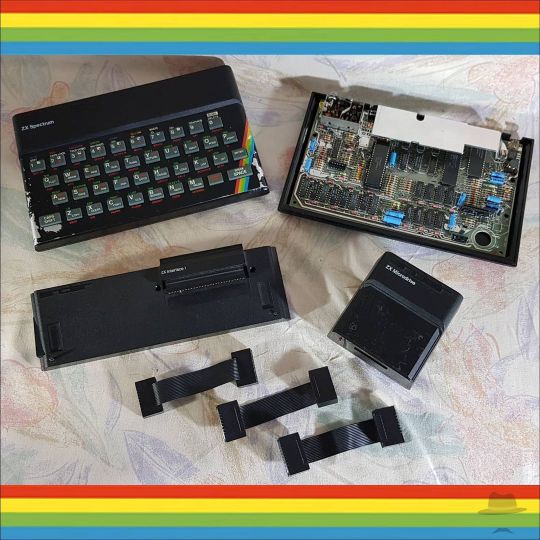
In my ongoing #Quest to catalog my collection, I came acress two additional broken #ZxSpectrum machines, an #Interface and a #MicroDrive... I can not wait to try to get at least one #Zx working again... #Retro #RetroComputing #RetroGaming #RetroGame #Commodore #Spectrum https://www.instagram.com/p/CQ2-okDj0CF/?utm_medium=tumblr
#quest#zxspectrum#interface#microdrive#zx#retro#retrocomputing#retrogaming#retrogame#commodore#spectrum
0 notes
Link
Eurogamer: In its early promotional material for the ZX Spectrum, Sinclair often went to almost painful lengths to avoid using the word 'games'. Released 35 years ago this month, the microcomputer was designed by Sir Clive Sinclair with serious applications in mind, and an optimistic role as a central hub for the nation's households. Constantly reiterating its expandability, these initial adverts were all about tech, emphasising the Spectrum's 'massive' RAM of 16 or - crikey! - 48k, as well as its high resolution and accessories, including a printer and the doomed ZX Microdrive.
0 notes
Photo
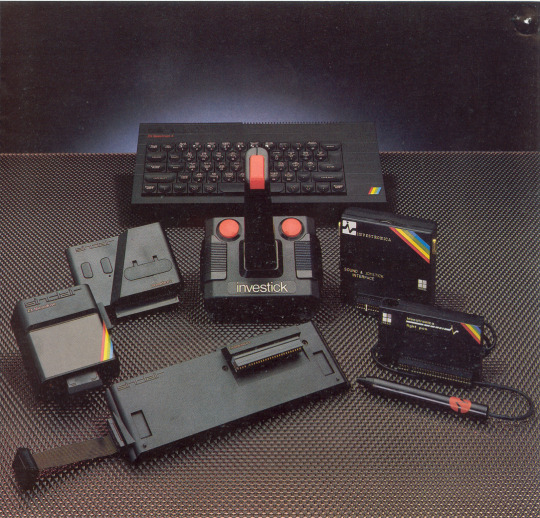

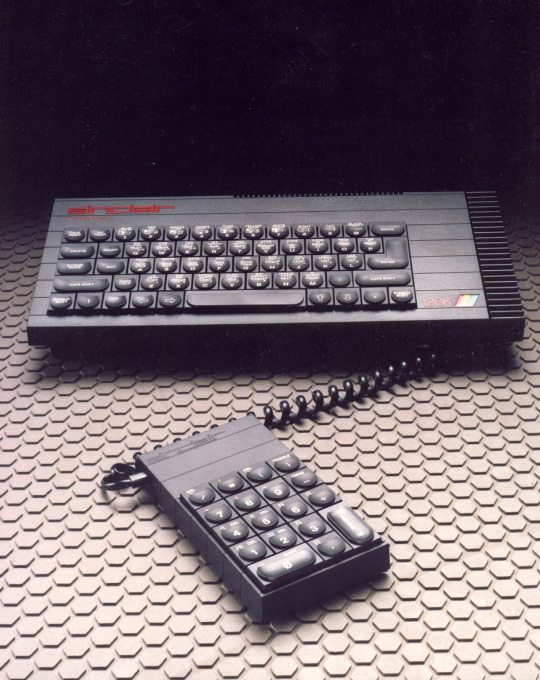
Sinclair ZX Spectrum & Spectrum+ with accessories (1986)
#sinclair#zx spectrum#zx spectrum+#zx microdrive#computer#retrogaming#technology#80's#80s#1980s#1986
314 notes
·
View notes
Text
Tech Ability: How the UK forgot six potential titans – BBC News
Image copyright Thinkstock
Image caption Many of the UK’s most promising tech firms ought to have bought by bigger, overseas firms
When it comes to tech, “were not receiving” absence of suggestions or ability in the UK.
But here i am , nonetheless, an ever-growing register of promising corporations that sell out or plainly fail, rather than growing into British titans that could rival the likes of Microsoft, Apple, Google, IBM, Intel, Oracle and Facebook.
Below are some remarkable lessons TAGEND
Sinclair Research
Image caption Sinclair Research sold more than 5 million ZX Spectrums over eight years
There was a time in the 1980 s when video gamers and teenage coders across the UK were more likely to be hunched over one of Sir Clive Sinclair’s computers than an American or Asian-made alternative.
Sinclair Research may have only attained its ZX Spectrums for domestic sale, but it licensed Timex to build clones that were sold elsewhere in Europe, the US and South America. Dozens of unofficial forms were a strike in the Soviet Union too, testifying their entreaty, if not a source of income.
But the firm get unstuck where reference is tried to enter the business grocery. Its Sinclair QL was designed to outshine IBM’s PCs, but its tape-based Microdrive storage was unreliable and the British corporation did not volunteer the various kinds of telephone support the corporate sector required.
Media captionWATCH: Sir Clive Sinclair debates his character in computing’s past and future
“Their computer patterns were reprehensible by our criteria, ” Sir Clive later told the BBC .~ ATAGEND
“But because … IBM had such a potent standing, I don’t think we could have challenged it.”
After the C5 electrical vehicle too failed to catch on, a cash-strapped Sir Clive exchanged his firm’s brand and assets in 1986 to Amstrad, another domestic computer-maker.
Image copyright PA
Image caption Sir Clive sold the rights to his computers to Alan Sugar’s Amstrad
Amstrad later faced troubles with computer storage of its own and eventually swopped focus to TV set-top cartons before exchanging out to BSkyB.
Friends Reunited
Image copyright Friends Reunited
Image caption Friends Reunited led to unions – and divorces
Years before Facebook was founded, let alone open to the public, a couple from Hertfordshire and one of their friends, created a social network that allured millions of users in the UK, Australia, South Africa and beyond.
Friends Reunited connected members with their former classmates by going them to share the names of their old schools and the year they had left.
Over time, the theme was expanded to cover targets of study, athletics units and neighbourhoods where users had lived. Spin-off locates were also created to offer online date, job searches, word timbers and routes for consumers to find their family trees.
When ITV paid 175 m to buy the operation in 2005, it expected to continue its red hot growth.
Image copyright ITV
Image caption By the time ITV induced Acquaintances Reunited free to employ, many of its members had gone abroad
But the broadcaster saw the mistake of continuing to commission useds to contact one another, rather than relying on ad revenue alone, for too long.
That allowed Facebook, MySpace and Bebo to take the lead.
ITV exchanged the business for simply 25 m in 2009. Although it tottered on under other UK owneds until earlier this year, it never retrieved its momentum.
Lastfm.com( 2002 -2 007)
Image copyright Last.fm
Image caption Last.fm offered customers a free course to get a personalised online radio terminal
Last.fm began its life as an internet radio terminal and an affiliated website where customers rostered the trails they liked to meet others with similar tastes.
But it only really took off after it merged with Audioscrobbler, a plug-in that automatically logged lyrics that its customers had listened to on their computer and MP3 player.
This drew it possible to build up a deeper picture of its users’ habits, which in turn facilitated the service stir song recommendations, and then later show nearby concerts and music videos too.
By 2007, the services offered had attracted 15 million consumers. However, rather than stay independent, its founders opted to sell out to the US media group CBS for $280 m( 212 m ).
Image copyright Last.fm
Image caption The Last.fm Scrobbler tool automatically advised the services offered each time the subscribers listened to a song
They holds the view that they had struggled to find a way to be profitable in light of the royalty and copyright costs the music industry was requiring, and said that teaming up with the US broadcaster handed them greater negotiating clout.
However, the service continues to rack up losses.
A subscription-based music streaming app was a bust, and these days Last.fm is a relatively minor player. It still recommends music but relies on YouTube, Spotify and other third-party services to provide it.
Autonomy
Image caption Mike Lynch and HP are still pushing a law duel over the merger of Autonomy
Silicon Valley had an opportunity to Google, but for a age Autonomy was the UK’s most highly regarded investigation giant.
The firm was founded in Cambridge in 1996 and developed software that allowed its your customers to hunt through “unstructured data” – emails, videos, social network poles, phone calls, images and other information are available in apps – that was not kept in neat databases.
The service attested favourite with a wide range of organisations, which used it to carry out law checks, create archives and center their marketing.
In 2011, Autonomy proved its data-analysis proficiencies had further potential when it developed an augmented actuality tool that allowed smartphones to superimpose graphics over real-world views.
Image copyright Autonomy
Image caption Autonomy’s augmented reality app proved videos on an iPhone when it was held in front of a relevant sign
Hollywood director JJ Abrams was among the first to use it within an app that promoted his movie Super 8, and others followed.
The same year, Autonomy’s chief executive, Mike Lynch, agreed to sell the business to HP for only over 7bn. And that’s where occasions get complicated.
Thirteen months after the merger was completed, HP claimed Mr Lynch had misrepresented his company’s financial situation and wrote down most of its value.
The two sides are now suing each other in a case which is able to drag out for years.
Image copyright Getty Images
Image caption HP’s Meg Whitman: Her house and Autonomy are suing one another
In a final construction, HP has agreed to sell Autonomy and some of its other activities to Micro Focus, an English software developer, meaning what is left of the business will soon be controlled again from UK shores.
ARM Holdings
Image copyright Apple
Image caption Apple took a stake in ARM Holdings to fasten a chipping for its Newton
Until very recently, ARM Holdings was the flag-waver for the UK’s tech scene.
The computer chip designer was created in Cambridge in 1990 as a joint project between Acorn Computers and Apple.
The US firm wanted a processor to supremacy its first hand-held machine, the Newton MessagePad, but eventually exchanged its stake after Steve Jobs reverted and ditched the product.
That didn’t result the ties between the two companies though, as ARM’s designs were used in processors that powered firstly the iPod, then the iPhone and iPad.
Most other smartphones are also is dependant on ARM’s chip creations, in addition to being able to a wide potpourrus of other technology including smart TVs, cars, fitness trackers, smartwatches and drones.
Image copyright ARM
Image caption ARM does not build chippings itself but licenses its designings to others
Many beings visualized ARM might remain independent as it suited device-makers not to have the conglomerate owned by one of their competitors.
But in July, Japan’s Softbank agreed to pay 24 bn for it.
ARM’s management suggested the move would help it “move faster in creating new technologies”.
But its co-founder Hermann Hauser has been critical, saying that ARM could have grown “even faster” if it had stayed solo.
Swiftkey
Image copyright Swiftkey
Image caption Swiftkey foresees terms to prevent users having to enter letters independently
The UK is famed for its expertise in artificial intelligence.
But several of the sector’s start-ups – including DeepMind, Magic Pony and VocalIQ – simply became known to the wider public once they had fallen into Silicon Valley hands.
Swiftkey was different because it actually wreaked popular concoctions to sell before being taken over.
The London-based house made a keyboard app for Android and iOS handsets.
The software predicts what its users want to write – including emojis – after they have only enrolled a few keystrokes.
Over time, its suggestions get more precise as it examines their habits, and if allowed to review their social network berths, it gets better still.
Swiftkey scored a publicity coup when its tech was adapted to help Prof Stephen Hawking type twice as fast as he could before.
Image copyright Getty Images
Image caption Prof Hawking expends a form of Swiftkey’s engineering
And in 2014, it decided to accelerate its raise further by making its app free to utilize, only billing consumers if they wanted to change the keyboard’s designing and colour.
The tactic drove. By the end of 2015, Swiftkey had been installed on about 300 million devices.
But it also effected its losses to grow .~ ATAGEND
In February this year, the business was sold for a reported 250 m to a deep-pocketed buyer.
Image copyright PA
Image caption Swiftkeys’s founders, Jon Reynolds and Ben Medlock, are now multimillionaires
“We imagine assembling Microsoft is the right next stagecoach in our journeying, ” its co-founders blogged.
Maybe.
But it also highlights how UK start-ups often find pressured to sell once their early-stage funding starts to run out.
The post Tech Ability: How the UK forgot six potential titans – BBC News appeared first on apsbicepstraining.com.
from WordPress http://ift.tt/2zVlQLu via IFTTT
0 notes
Text
Tech Ability: How the UK forgot six potential titans – BBC News
Image copyright Thinkstock
Image caption Many of the UK’s most promising tech firms ought to have bought by bigger, overseas firms
When it comes to tech, “were not receiving” absence of suggestions or ability in the UK.
But here i am , nonetheless, an ever-growing register of promising corporations that sell out or plainly fail, rather than growing into British titans that could rival the likes of Microsoft, Apple, Google, IBM, Intel, Oracle and Facebook.
Below are some remarkable lessons TAGEND
Sinclair Research
Image caption Sinclair Research sold more than 5 million ZX Spectrums over eight years
There was a time in the 1980 s when video gamers and teenage coders across the UK were more likely to be hunched over one of Sir Clive Sinclair’s computers than an American or Asian-made alternative.
Sinclair Research may have only attained its ZX Spectrums for domestic sale, but it licensed Timex to build clones that were sold elsewhere in Europe, the US and South America. Dozens of unofficial forms were a strike in the Soviet Union too, testifying their entreaty, if not a source of income.
But the firm get unstuck where reference is tried to enter the business grocery. Its Sinclair QL was designed to outshine IBM’s PCs, but its tape-based Microdrive storage was unreliable and the British corporation did not volunteer the various kinds of telephone support the corporate sector required.
Media captionWATCH: Sir Clive Sinclair debates his character in computing’s past and future
“Their computer patterns were reprehensible by our criteria, ” Sir Clive later told the BBC .~ ATAGEND
“But because … IBM had such a potent standing, I don’t think we could have challenged it.”
After the C5 electrical vehicle too failed to catch on, a cash-strapped Sir Clive exchanged his firm’s brand and assets in 1986 to Amstrad, another domestic computer-maker.
Image copyright PA
Image caption Sir Clive sold the rights to his computers to Alan Sugar’s Amstrad
Amstrad later faced troubles with computer storage of its own and eventually swopped focus to TV set-top cartons before exchanging out to BSkyB.
Friends Reunited
Image copyright Friends Reunited
Image caption Friends Reunited led to unions – and divorces
Years before Facebook was founded, let alone open to the public, a couple from Hertfordshire and one of their friends, created a social network that allured millions of users in the UK, Australia, South Africa and beyond.
Friends Reunited connected members with their former classmates by going them to share the names of their old schools and the year they had left.
Over time, the theme was expanded to cover targets of study, athletics units and neighbourhoods where users had lived. Spin-off locates were also created to offer online date, job searches, word timbers and routes for consumers to find their family trees.
When ITV paid 175 m to buy the operation in 2005, it expected to continue its red hot growth.
Image copyright ITV
Image caption By the time ITV induced Acquaintances Reunited free to employ, many of its members had gone abroad
But the broadcaster saw the mistake of continuing to commission useds to contact one another, rather than relying on ad revenue alone, for too long.
That allowed Facebook, MySpace and Bebo to take the lead.
ITV exchanged the business for simply 25 m in 2009. Although it tottered on under other UK owneds until earlier this year, it never retrieved its momentum.
Lastfm.com( 2002 -2 007)
Image copyright Last.fm
Image caption Last.fm offered customers a free course to get a personalised online radio terminal
Last.fm began its life as an internet radio terminal and an affiliated website where customers rostered the trails they liked to meet others with similar tastes.
But it only really took off after it merged with Audioscrobbler, a plug-in that automatically logged lyrics that its customers had listened to on their computer and MP3 player.
This drew it possible to build up a deeper picture of its users’ habits, which in turn facilitated the service stir song recommendations, and then later show nearby concerts and music videos too.
By 2007, the services offered had attracted 15 million consumers. However, rather than stay independent, its founders opted to sell out to the US media group CBS for $280 m( 212 m ).
Image copyright Last.fm
Image caption The Last.fm Scrobbler tool automatically advised the services offered each time the subscribers listened to a song
They holds the view that they had struggled to find a way to be profitable in light of the royalty and copyright costs the music industry was requiring, and said that teaming up with the US broadcaster handed them greater negotiating clout.
However, the service continues to rack up losses.
A subscription-based music streaming app was a bust, and these days Last.fm is a relatively minor player. It still recommends music but relies on YouTube, Spotify and other third-party services to provide it.
Autonomy
Image caption Mike Lynch and HP are still pushing a law duel over the merger of Autonomy
Silicon Valley had an opportunity to Google, but for a age Autonomy was the UK’s most highly regarded investigation giant.
The firm was founded in Cambridge in 1996 and developed software that allowed its your customers to hunt through “unstructured data” – emails, videos, social network poles, phone calls, images and other information are available in apps – that was not kept in neat databases.
The service attested favourite with a wide range of organisations, which used it to carry out law checks, create archives and center their marketing.
In 2011, Autonomy proved its data-analysis proficiencies had further potential when it developed an augmented actuality tool that allowed smartphones to superimpose graphics over real-world views.
Image copyright Autonomy
Image caption Autonomy’s augmented reality app proved videos on an iPhone when it was held in front of a relevant sign
Hollywood director JJ Abrams was among the first to use it within an app that promoted his movie Super 8, and others followed.
The same year, Autonomy’s chief executive, Mike Lynch, agreed to sell the business to HP for only over 7bn. And that’s where occasions get complicated.
Thirteen months after the merger was completed, HP claimed Mr Lynch had misrepresented his company’s financial situation and wrote down most of its value.
The two sides are now suing each other in a case which is able to drag out for years.
Image copyright Getty Images
Image caption HP’s Meg Whitman: Her house and Autonomy are suing one another
In a final construction, HP has agreed to sell Autonomy and some of its other activities to Micro Focus, an English software developer, meaning what is left of the business will soon be controlled again from UK shores.
ARM Holdings
Image copyright Apple
Image caption Apple took a stake in ARM Holdings to fasten a chipping for its Newton
Until very recently, ARM Holdings was the flag-waver for the UK’s tech scene.
The computer chip designer was created in Cambridge in 1990 as a joint project between Acorn Computers and Apple.
The US firm wanted a processor to supremacy its first hand-held machine, the Newton MessagePad, but eventually exchanged its stake after Steve Jobs reverted and ditched the product.
That didn’t result the ties between the two companies though, as ARM’s designs were used in processors that powered firstly the iPod, then the iPhone and iPad.
Most other smartphones are also is dependant on ARM’s chip creations, in addition to being able to a wide potpourrus of other technology including smart TVs, cars, fitness trackers, smartwatches and drones.
Image copyright ARM
Image caption ARM does not build chippings itself but licenses its designings to others
Many beings visualized ARM might remain independent as it suited device-makers not to have the conglomerate owned by one of their competitors.
But in July, Japan’s Softbank agreed to pay 24 bn for it.
ARM’s management suggested the move would help it “move faster in creating new technologies”.
But its co-founder Hermann Hauser has been critical, saying that ARM could have grown “even faster” if it had stayed solo.
Swiftkey
Image copyright Swiftkey
Image caption Swiftkey foresees terms to prevent users having to enter letters independently
The UK is famed for its expertise in artificial intelligence.
But several of the sector’s start-ups – including DeepMind, Magic Pony and VocalIQ – simply became known to the wider public once they had fallen into Silicon Valley hands.
Swiftkey was different because it actually wreaked popular concoctions to sell before being taken over.
The London-based house made a keyboard app for Android and iOS handsets.
The software predicts what its users want to write – including emojis – after they have only enrolled a few keystrokes.
Over time, its suggestions get more precise as it examines their habits, and if allowed to review their social network berths, it gets better still.
Swiftkey scored a publicity coup when its tech was adapted to help Prof Stephen Hawking type twice as fast as he could before.
Image copyright Getty Images
Image caption Prof Hawking expends a form of Swiftkey’s engineering
And in 2014, it decided to accelerate its raise further by making its app free to utilize, only billing consumers if they wanted to change the keyboard’s designing and colour.
The tactic drove. By the end of 2015, Swiftkey had been installed on about 300 million devices.
But it also effected its losses to grow .~ ATAGEND
In February this year, the business was sold for a reported 250 m to a deep-pocketed buyer.
Image copyright PA
Image caption Swiftkeys’s founders, Jon Reynolds and Ben Medlock, are now multimillionaires
“We imagine assembling Microsoft is the right next stagecoach in our journeying, ” its co-founders blogged.
Maybe.
But it also highlights how UK start-ups often find pressured to sell once their early-stage funding starts to run out.
The post Tech Ability: How the UK forgot six potential titans – BBC News appeared first on apsbicepstraining.com.
from WordPress http://ift.tt/2zVlQLu via IFTTT
0 notes